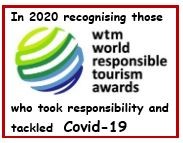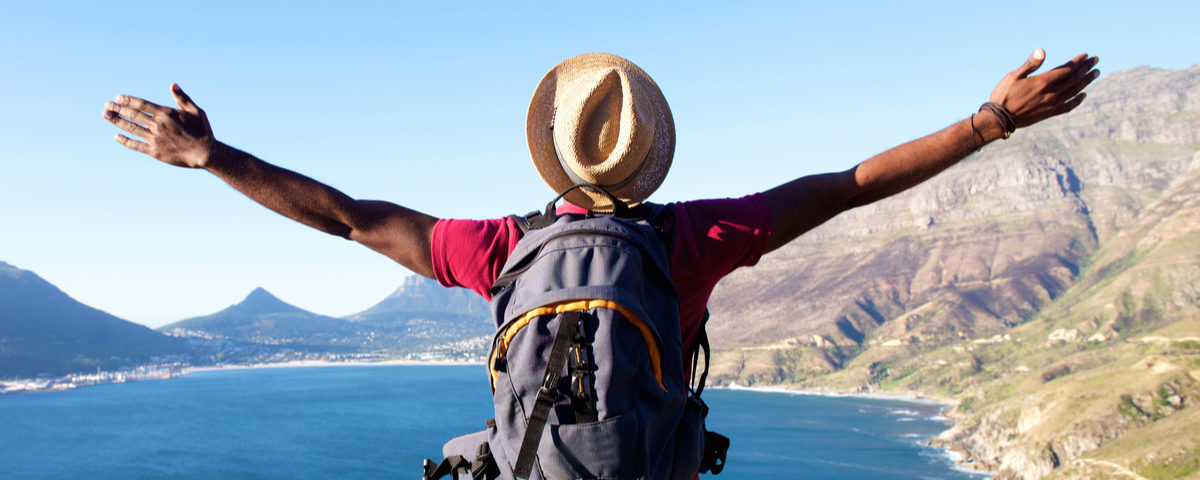There has been a lot of talk lately about adventure travel being one of the sectors that does better in whatever tourism comes next. The argument seems to be that, craving safety from health risks, we will seek out experiences that take us into the remote outdoors, far from other people. I’ve even seen a suggestion that ‘isolation tourism’ could be a trend.
This all makes a certain sense, just as it makes sense that we are exploring which parts of our industry are best suited to a future tourism defined by COVID-19. (For anyone working in adventure travel, and trying to understand how to deliver safe experiences, the just released Adventure Travel guidelines by ATTA are worth a read).
But we need to do more than just tweak our processes to meet a new set of health and safety concerns. The world is likely to be a different place after an epochal experience like this. We need to explore how we should reimagine the role of tourism in supporting a society that will bear deep emotional scars from the experience of living and dying through a global pandemic isolated from those we love.
I’ve been more alone these last few months than ever before in my life. First of all, my wife and I moved from London to south west France last October, renting an isolated farmhouse on a hill several kilometres from anyone else. Other than a few visitors from the UK, we saw almost no one.
Then lockdown happened, and for two months we hardly left the house – five trips to the supermarket was just about it. Other than those surreal forays for food, we really did not see – quite literally for as far as the horizon stretched – anyone. A few video calls to friends and family were it.
After France’s lockdown ended on May 11, we finally moved to our new home. It’s an old plant nursery, where for the last 25 years the previous owners have planted drought-resistant plants, shrubs and trees from across the Mediterranean and similar climatic regions around the world.
Every day for the last seven weeks I have walked around the garden, slowly learning the names of the many species with whom I share my new home. My guide on my travels is the remarkable Plantnet app. I point my phone’s camera at whichever new plant intrigues me, and upload the image to Plantnet’s database. It then gives me not just the plant’s name, but the botanical history, as well as the uses in cuisine, medicine, indigenous rituals and practices around the world.
I’m learning which trees the golden orioles prefer, which ones the cuckoo sings at in the morning. I pick off a berry from the Sichuan pepper tree whenever I walk past, and rub it between my fingers to extract its scent. With every stroll around the garden I discover a little bit more about its inhabitants, and I feel less alone.
In her book Braiding Sweetgrass: Indigenous Wisdom, Scientific Knowledge, and the Teachings of Plants, the American writer Robin Wall Kimmerer describes the phenomenon of species loneliness, which she calls “a deep, unnamed sadness stemming from estrangement from the rest of Creation, from the loss of relationship. As our human dominance of the world has grown, we have become more isolated, more lonely when we can no longer call out to our neighbors.” The book was published in 2013, but this quote feels particularly resonant now, at this time when our world is experiencing such extreme isolation, loneliness and the impact of human dominance of our natural world.
I see echoes of this loneliness in those videos that were so widely shared on social media in the first weeks of lockdown, of penguins and deer and other wild animals returning to our towns’ empty streets. Each one of these was a miniature tragedy – reinforcing the separation between humans and the natural world, sharing a dangerous message that it is us or them. That we can’t live together. Tourism – especially adventure tourism and all forms of travel that take us deep into nature – need to bring us back from this disconnected way of seeing and being ourselves in the world.
We see a walk in a forest as a time to be far away from others and alone, rather than a chance to be closer to birds and trees and whatever else we share the ecosystem with. We present nature as an landscape, a screensaver backdrop for the drama of our human endeavours. We yearn to travel far and at speed because we don’t wonder at what is beneath our feet or nearest to our front door.
This needs to change. To heal the scars, the loneliness and the isolation, we need an adventure tourism that slows us down and opens us back up to the natural world that we are a part of. We may still have to physically distance ourselves from other humans, but the closer we can get to nature, the less alone we’ll be.

This year’s World Responsible Tourism Awards have been adapted to recognise businesses, individuals, destinations and organisations which have taken responsibility to address the challenge of COVID-19. Find out more about the Awards and nominate online by the end of July.
Only those nominated can be recognised by the judges, you can nominate yourself and others, and you can nominate as many as you wish.
You may also be interested in…
- Does Coronavirus have any lessons for sustainable tourism?
- How the Quest for Epic Adventures is Changing Luxury Travel
- Will 2020 define the future of tourism?

